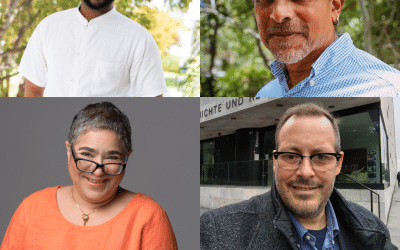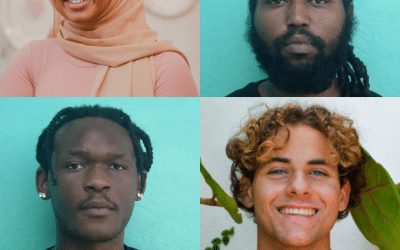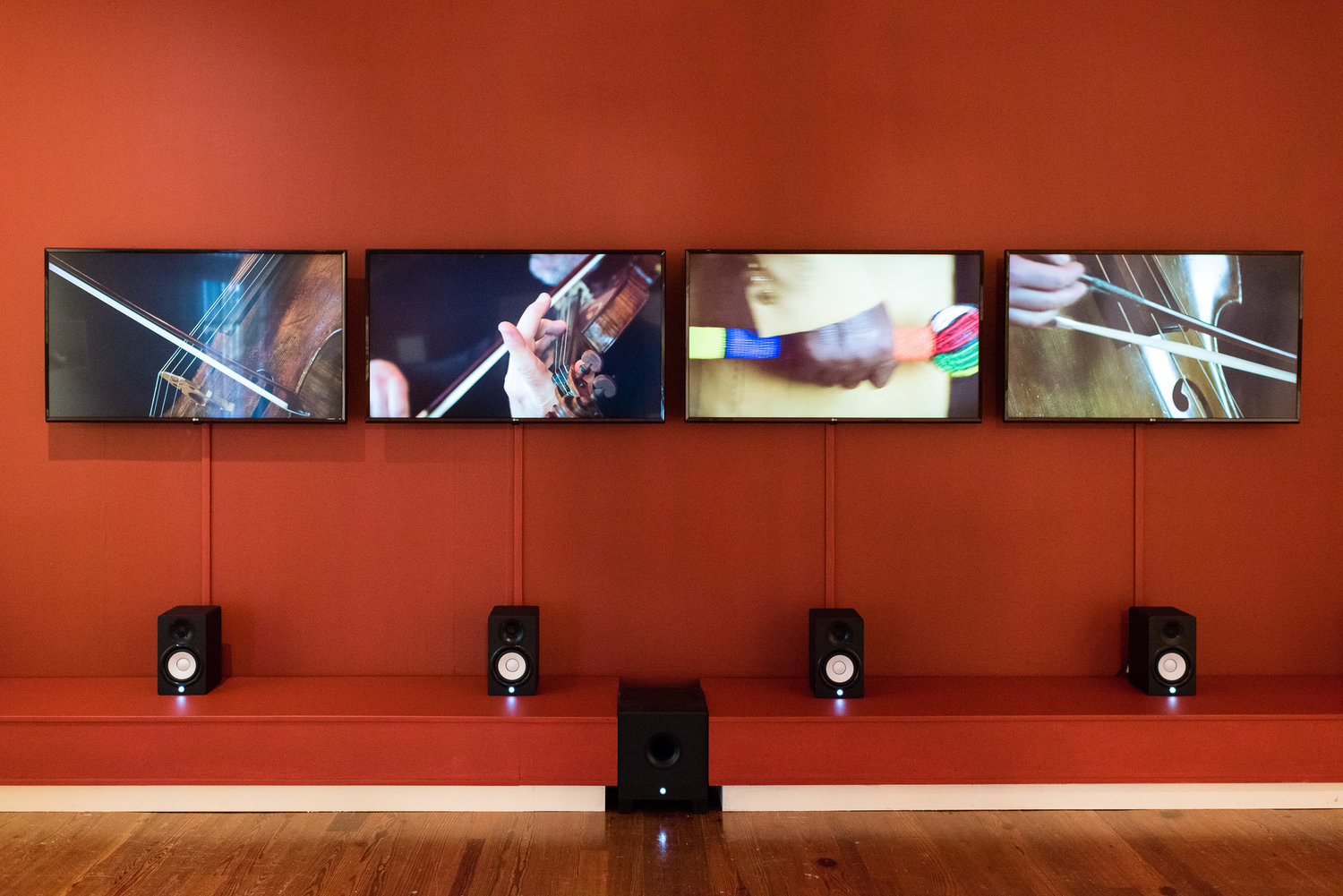
By Natalie Willis
The last in our series of two-part interviews with the artists of “We Suffer To Remain”, this week we speak to Scottish artist Graham Fagen on having his work not only as the starting point of this series of exhibitions on “Difficult Conversations”, but also on having his work brought to the Caribbean context to which it refers. “The Slave’s Lament” (2015) is a moment for us to consider the realities of this Trans-Atlantic history in contemporary contexts, and now that we’ve seen Bahamian responses with our national artists responding to this work, we take a moment to consider Fagen’s perspectives in our space.
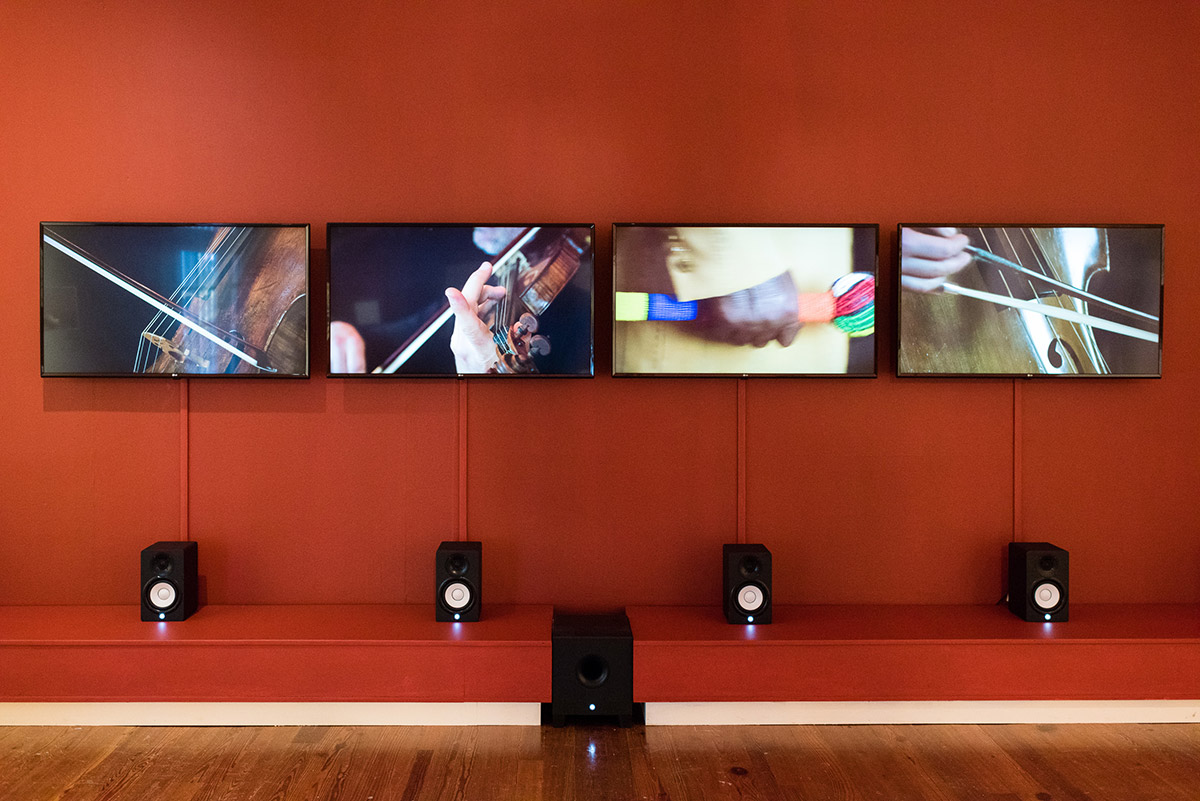
“The Slave’s Lament” (2015), Graham Fagen, 5 channel audio video installation, dimensions variable.
Natalie Willis: Talk to me about what it means for you to have your work in this space because it’s been quite a long journey – over a decade. Your work has moved around different spaces internationally, but what does it mean for you to have it displayed in The Bahamas and other Caribbean nations?
Graham Fagen: It’s tricky, but I suppose as an artist when you make an artwork or when you’re thinking about an artwork to make, you’re very close to the subject matter. Especially in thinking about “The Slave’s Lament”, there’s a lot of very difficult questions that you’re dealing with within yourself. Questions about what you’d do differently arise, but I suppose the thing that was important for me were my questions about Robert Burns’ song “The Slave’s Lament”.
My questions were two straightforward ones to start with. First, why did he write that song in 1792, and what was it used for? I was wondering if perhaps it was used by the abolition movement when that was starting to gain a bit of strength. Was it maybe part of that? We’ll never really know the reason or just how it was used at that time.
But second, and maybe most importantly, what does that song mean for us today? When I thought of my situation, and my cultural tellings from school, that “Robert Burns, tartans, and clans is your culture” as a Scottish person. I had questions such as “Well if that’s technically “mine”, but I don’t have a Scottish surname, so I don’t have a tartan or a clan, and if it’s Jamaican reggae culture that’s shaping and forming my peer group, what does it make that?”
If we as Scottish people are being taught that Robert Burns is ours and nothing else, is the reggae we feel an affinity to somehow not “ours”? Maybe one way to ask the question of what “The Slave’s Lament” could mean today would be to reach out to the Jamaican reggae singers and players who have influenced me and my peer group’s thinking, and that maybe that’s where the conversation can start.
NW: Was that what the work was for you at that point? And how did those conversations go for you?
GF: My ambitions went as far as that in the beginning I suppose, because if they didn’t want to even have the conversation, then that was a stopper. When I met with the singers and players both in the UK and in Jamaica and had positive responses, that gave me a place to begin to think of the aim for the artwork. Though I had only dreamt that it might be possible, I did of course have hopes the artwork could have been displayed in places like this, to be somewhere like The National Art Gallery of The Bahamas, to be able to share the questions that I had for myself. It’s been to lots of places: in Europe, North America, and now a few places in the Caribbean. It’s bizarre for me.
NW: Different then? How so?
GF: Other exhibitions I’ve been a part of, you think to yourself “I’m so lucky, that’s such a privilege to have my work in this museum or that gallery”, but here I don’t feel like that necessarily, it’s more than that. I think that for being here, I feel like the work is here because there’s more hard work still to be done.
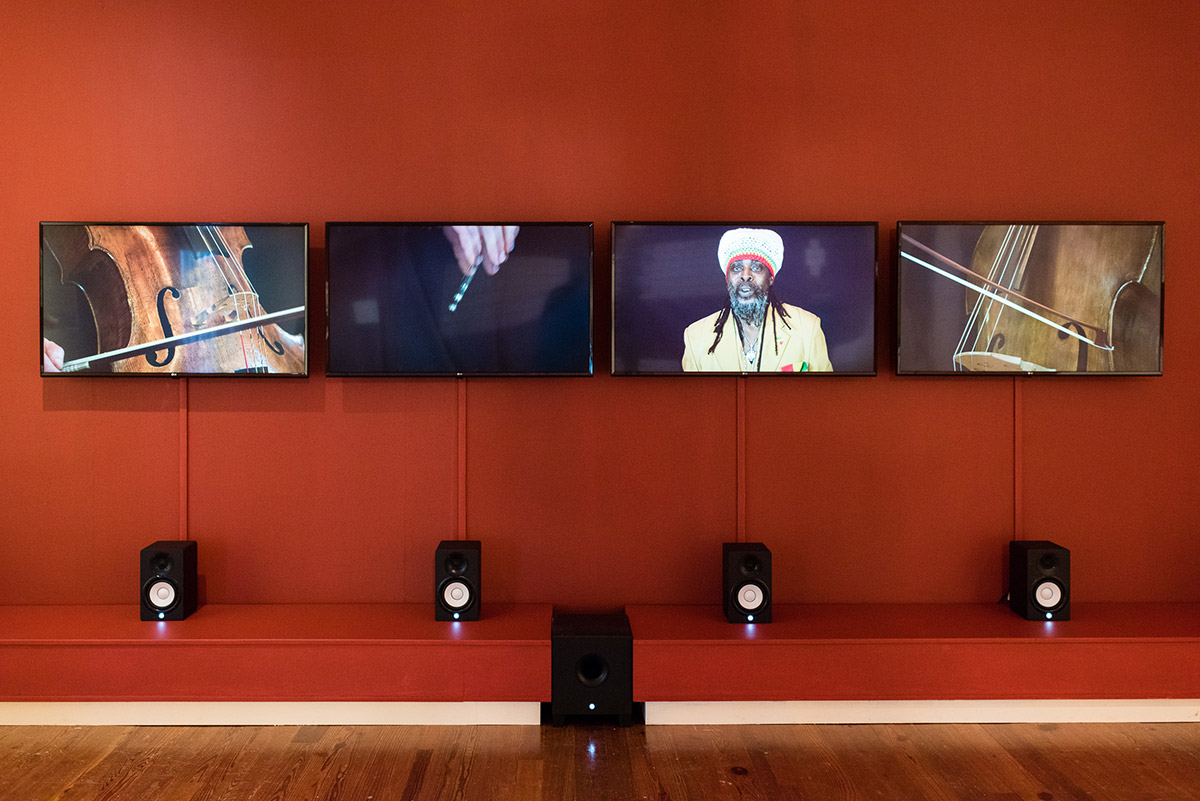
Installation shot of “The Slave’s Lament” (2015) by Scottish artist Graham Fagen, part of “We Suffer To Remain”, a collaborative exhibition with the British Council.
NW: Indeed there is. And more questions to unpack on its journey, some of which came up around its time here, in particular with ideas around the gaze and the focus on the mouth. In your practice, you have a series of works based on the mouth, and I see that with Ghetto Priest’s mouth in this work, what’s the significance of that for you?
GF: I’ve made a lot of work with teeth specifically more than mouths, they’ve been part of my work for a long time. Speaking specifically about what the viewer sees in “The Slave’s Lament,” it’s a video with four people showing the action of four people, like a band or ensemble. I thought about if you were to go and watch a band or an ensemble playing if you’re the audience, what is it you look at? What became clear as I was working through the idea was that I was interested in people’s actions. So for the musicians, the performance is about pressing a finger onto the string, about the hand pushing the bow, the attention was at these points and these places. If someone was talking or singing, you look to that point – I noticed even a moment ago that you were looking at my mouth because I’m talking too much.
NW: Ha! Never, you’re doing fine.
GF: That’s good! So for me, the view I wanted to give was the point of view or the gaze that you might have if you were watching the players and Ghetto Priest live. Where would you look? So there are times when Ghetto Priest isn’t singing, and we see maybe his eyes, there’re times we see his voodoo stick, his feet as he moves in a rhythm, and when he is singing we see him from the chest up or close headshot, and we also see his mouth. There are connotations that I’m very aware of with that, but I think what I was doing with the work, and what you would do with any work especially if you’re collaborating with other people, is that you set a process in motion.
You rely on the work of other people to achieve the aim, and I think that’s what was important about that process there. While I was aware of the other references, it’s very interesting because when you’re making work, you’re not thinking “this is going to the Caribbean, so I need to think about a very particular cultural way of looking and thinking”. Fortunately this work has been shown in lots of different countries as I’ve said, and my thought for making that after was “yes, I want people to think about those connotations, I want people to consider what it is to be as intimate with a human as they are when they look at an action of a singer”. The primary purpose is to get closer to that voice and to that soul.
NW: For certain, but still those connotations are hard to move away from.
GF: Yes. There are these connotations associated with it, and in a sense, they are of course about judging and for personal gain, and that’s essential for the piece. I don’t make art to create a classically pleasing aesthetic, that’s not the reason I’m an artist. I’m an artist because I’m interested in what gives us as people our shapes and forms, our understandings and misunderstandings, what gives us our cultural awareness, what and how we relate and connect to other cultures. So those questions come from those various readings of “The Slave’s Lament,” and they are a vital part of that work.
The exhibition “We Suffer To Remain”, a collaboration with the British Council, will be on view at the NAGB through July 29th.
